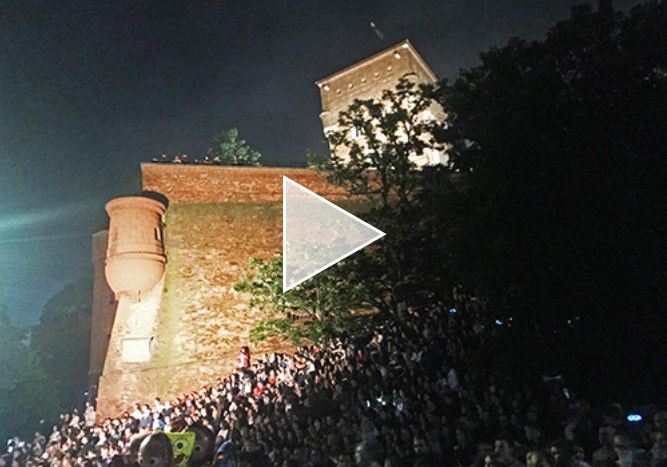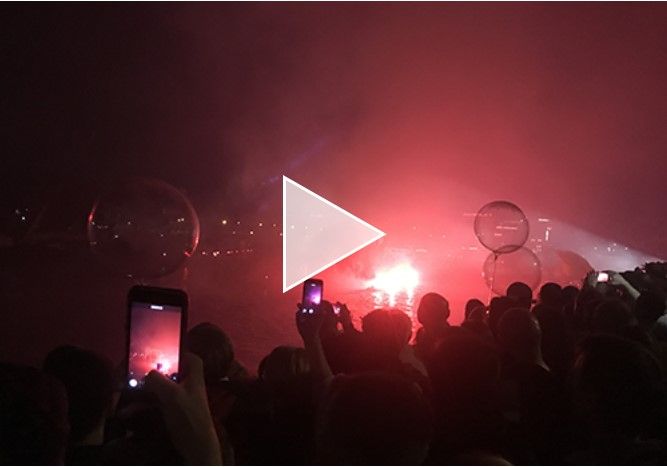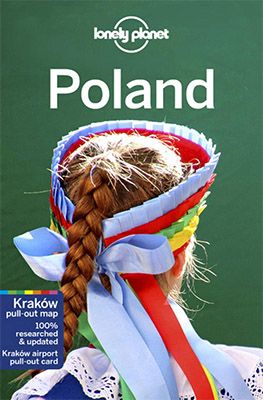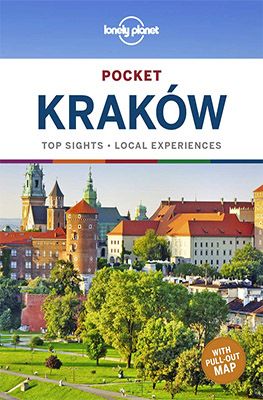The particularly attractive city of Kraków is a true historical and cultural jewel at the foot of the Carpathians. This second city of Poland was the capital during the Middle Ages but is now the cultural capital of the country. There is a reason why the city is the most popular Polish city with the tourists.
Below, we describe some of the highlights that in our opinion should not be missed when you take a city trip to Kraków.
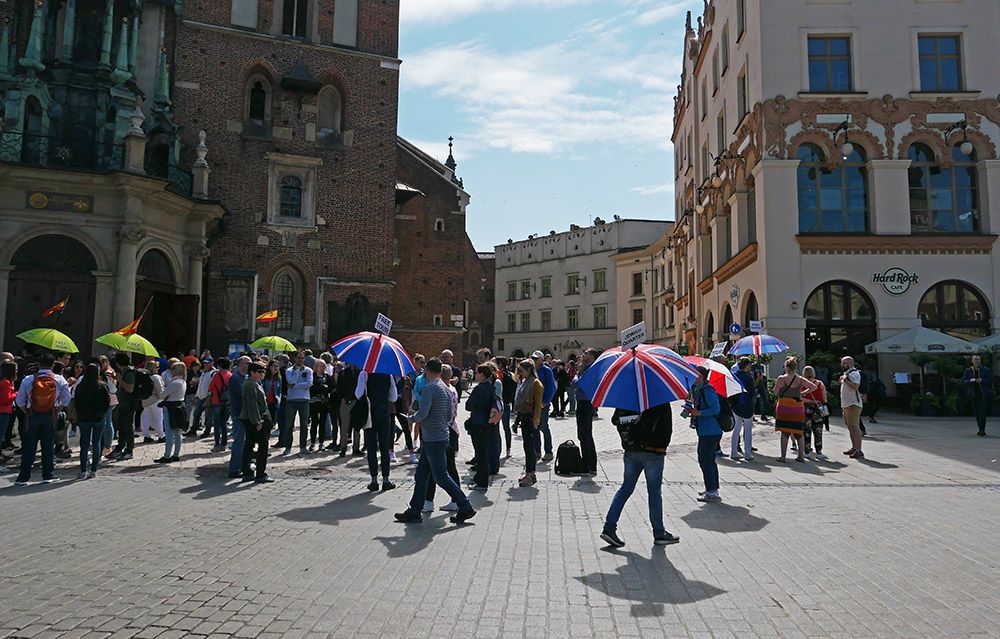
Highlights of Kraków and its surroundings
Sightseeing in the old town
In the centre, you will find old churches, monuments, the largest market square in Europe and more recently, art galleries and many trendy bars. If, like us, you enjoy dining on a terrace, you’ll find yourself in the old city centre, which is on the UNESCO world heritage list, where you’ll find plenty to do.
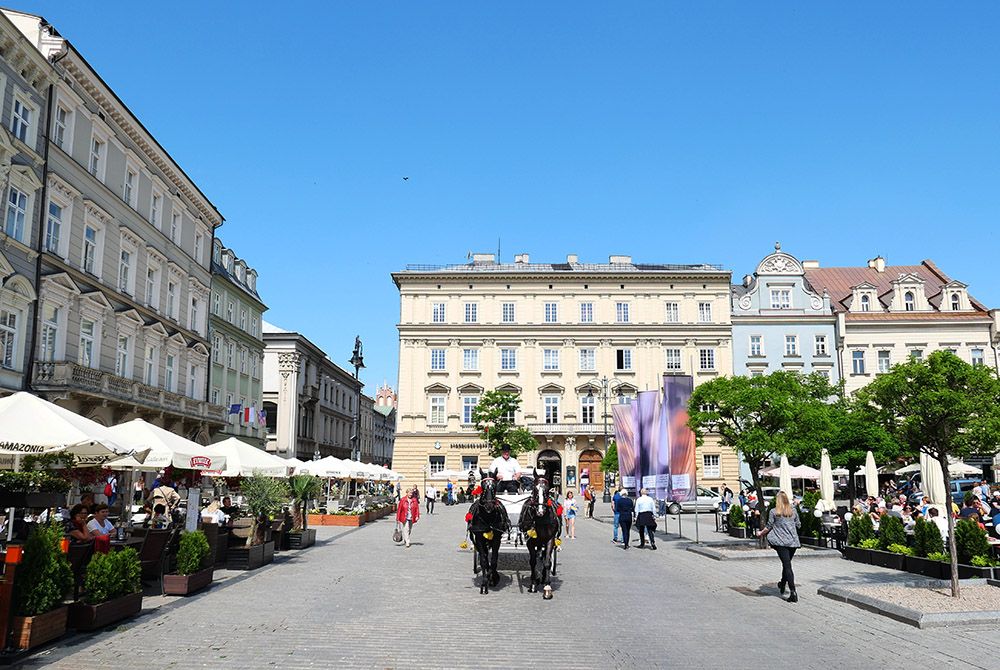
Royal route
Apart from the many charming terraces, you can go on beautiful walks in the old town. From the Florianus Gate, which is part of Kraków’s only remaining city wall, you can walk the royal route. The gate dates back to the 13th century when a city wall was built to protect Kraków from the Ottomans.
The royal route continues along the Floriańska and through the main square Rynek Główny to the castle of Wawel. Along the route you will find many beautifully preserved monumental buildings. There are several palaces and churches, the town hall tower and many other beautiful historical houses on the central square (the big market). In the middle of the square is the enormous, gothic cloth hall. The beautiful castle, which dates back to the 14th century, is situated together with the cathedral and the royal palace on a hill on the banks of the river Wisła.
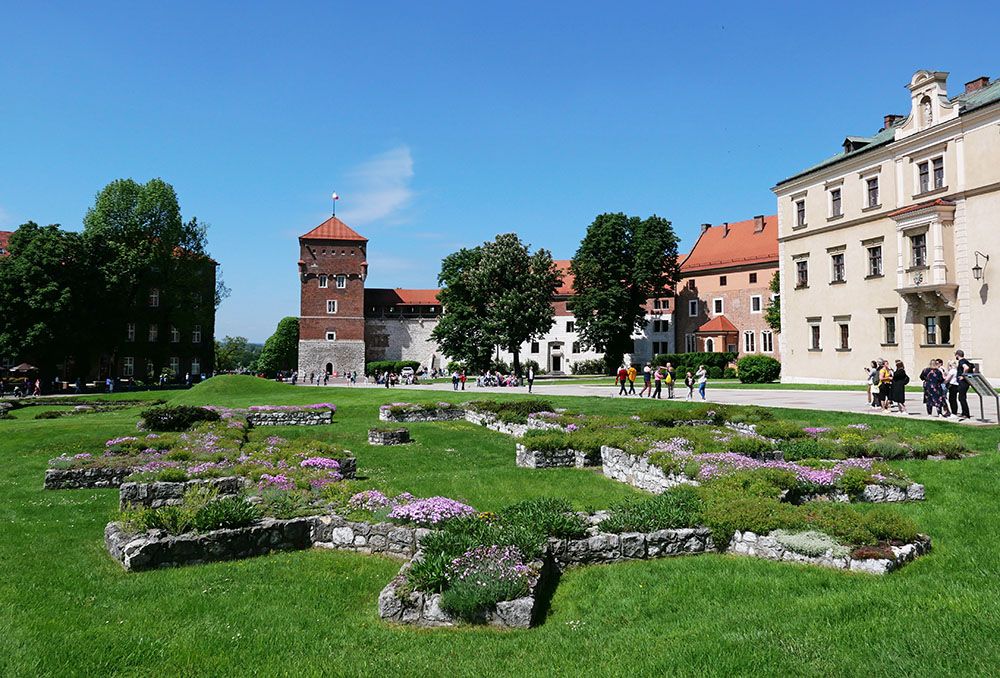
The legend of the dragon
The Dragon’s Cave is located underneath the castle. According to reports, a dragon lived there in the Middle Ages, fleeing into the river as he set fire to the cave by eating a sheep filled with sulphur. During the summer festival at the beginning of the meteorological summer, a depiction of dragons floating above the river from left to right and vice versa takes place at the castle by the river. We were there, but the story was not entirely clear to us. The performance is enhanced by a fantastic fireworks spectacle that lasts for about 45 minutes. Highly recommended if you are going to Kraków in that period!
Planty Park
Another walk takes you through the Planty, a large park that surrounds the whole of the old town. The park was created at the beginning of the 19th century when the site, where the old city wall used to be, fell into disrepair and was used as a rubbish dump and sewer. It is a beautiful park where you will find fountains and statues. The Florianus Gate, the castle of Wawel, the Sint-Annakerk and some other buildings of the university are located in the park.
Sightseeing in the district Kazimierz
In addition to the old centre, the Kazimierz district is of historical importance. This district, which dates from the beginning of the 14th century, borders on the south of the old city. During the Middle Ages it was its own city. It was not until the end of the 18th century that Kazimierz became a district of Kraków.
There is a Christian district in the west and a Jewish one in the east. We found the Jewish district particularly interesting. Since the Holocaust, there are significantly fewer Jews living there than in the period before. Many Jews were initially moved to the ghetto in Podgórze. However, most of them did not survive the war.
In Kazimierz, you can still find many synagogues including the Old Synagogue which was built in the 15th century. This synagogue, located on the superbly charming square of Szeroka, is the oldest existing synagogue in Poland. At the end of the 1950s, the house of prayer was restored at the expense of the state. On the square you will find many terraces and eateries where you can enjoy delicious, typical Jewish, Polish or international dishes.
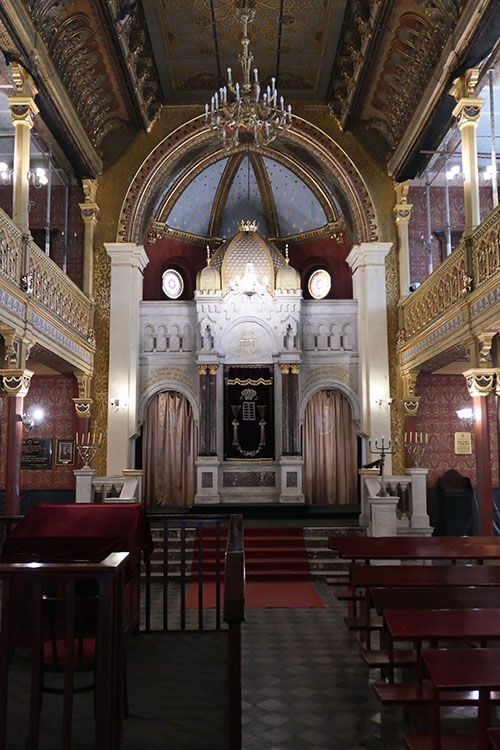
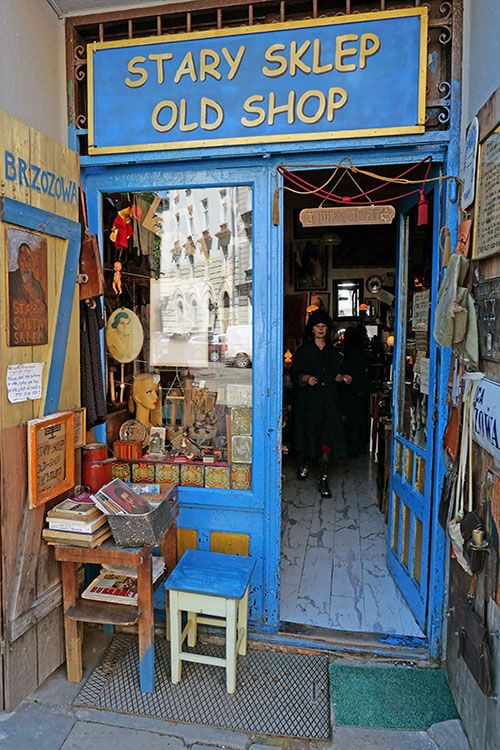
Sightseeing in the Podgórze district
The Podgórze district on the southern bank of the Vistula is also worth a visit, even if it’s just an artistic walk over the pedestrian and cycle bridge. During the Nazi occupation you had the Jewish ghetto there. Part of the wall of the ghetto that can be found on the Ulica Lwówska, still reminds you of that period.
The Schindler Factory in Podgórze
One of the most impressive sights of the Podgórze district was the old enamel factory. The factory was founded in 1937 by three Jewish entrepreneurs, but after it was founded changed ownership several times and was later in financial distress.
In September 1939, Nazi Germany invaded Poland and the Second World War broke out. At the beginning of 1940, the German Oskar Schindler arrived in Kraków. He took over the factory and renamed it the ‘Deutsche Enamelwarenfabrik’ (DEF – German Enamelware Factory). Because he produced ammunition in addition to pots and pans, his factory was considered an indispensable supplier for the army. This gave him a degree of autonomy and enabled him to turn his factory into a kind of refuge. Thanks to his membership of the Nazi Party and an agreement with the SS, in 1944 more than 1,100 Jews worked for him who would not be deported to the many labour and extermination camps.
The factory, which has since been called the Schindler Factory, is now a museum with a particularly well-designed, permanent exhibition on “Kraków during the Nazi occupation of 1939-1945”. In the museum, in addition to enamel pots and pans, you will find Schindler’s desk, as well as many photographs dating from that period. In addition, various scenes for the Oscar award-winning film ‘Schindler’s List‘ were filmed here. You can easily spend two to three hours here. More information.
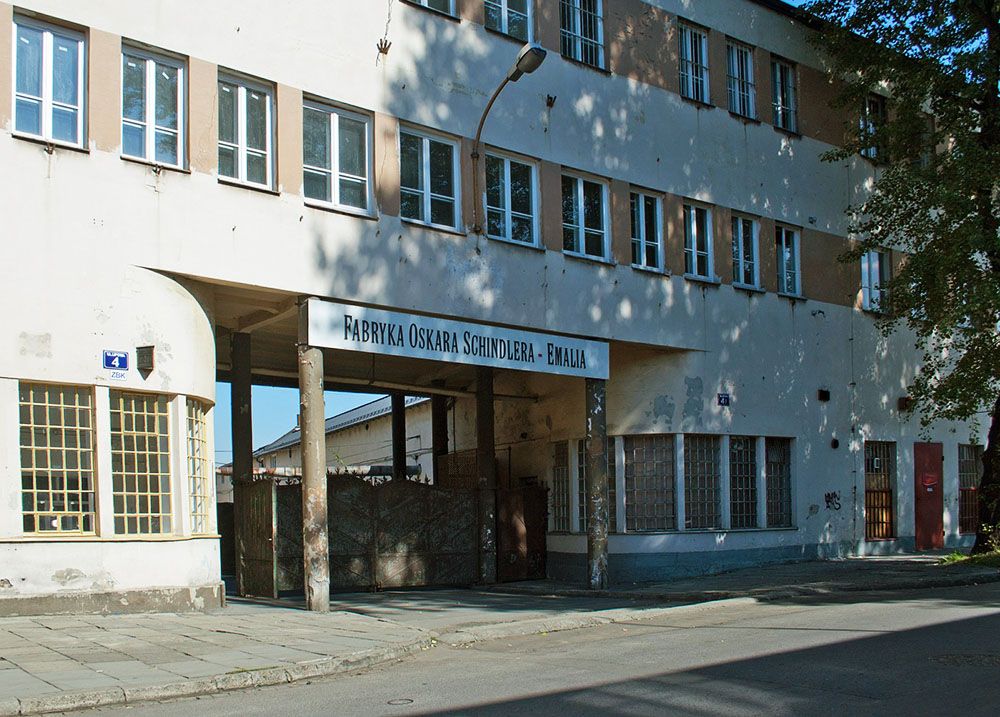
Heroes of the Ghetto Square
The Kraków Ghetto was one of the five most important Jewish ghettos. During the occupation of Poland during the Second World War, it was built by the Nazis for the purpose of exploitation, terror and persecution of local Polish Jews. Podgórze was chosen as the location for the ghetto instead of the Jewish quarter Kazimierz because Hans Frank, Hitler’s personal lawyer, believed that Kazimierz was more important for Kraków’s history.
The ghetto was also the place where the selection of Jews who were still ‘of use’ and Jews who were hardly of any use at all was made. The latter group was deported soon after the construction of the ghetto. The location from which the deportations to the extermination camps began is the ‘Plac Bohaterow Getta’, or square of the heroes of the ghetto. Inspired by descriptions of abandoned furniture and personal belongings scattered throughout the square, there are now 64 artistic, large copper chairs. They are representative of the 640,000 Jewish inhabitants of the Netherlands before the Second World War.
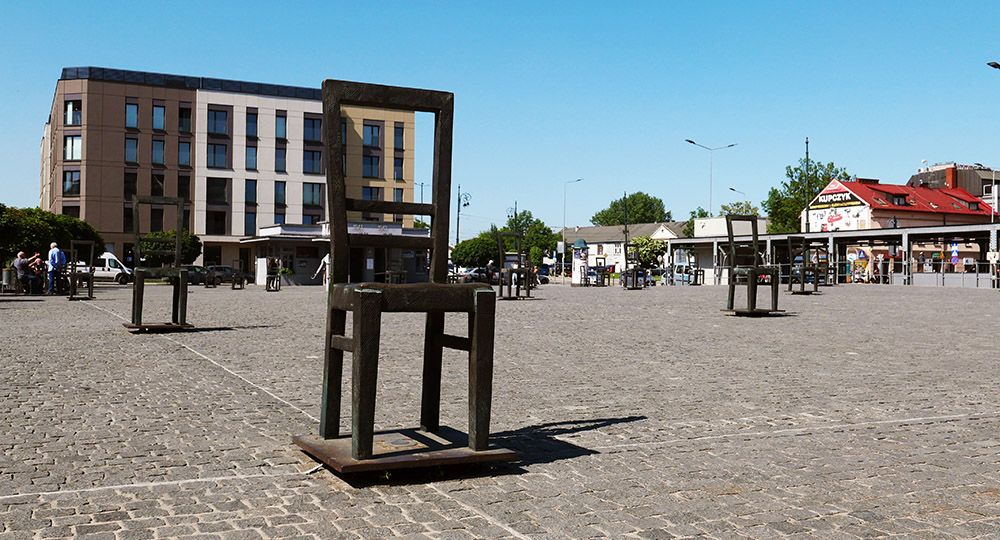
Sightseeing outside Kraków
Known sights from outside Kraków include the Wieliczka salt mine and the former concentration camps of Auschwitz I and Auschwitz II (Berkenau), which are described in a separate blog. We also heard enthusiastic stories about the town of Zalipie, said to be the most beautiful village in Poland, located about 100 kilometres from Kraków. Unfortunately, we could not visit the village as we did not have enough time.
Wieliczka salt mine
The city of Wieliczka is located 17 kilometres from Kraków. The city is known for its more-than-seven-centuries-old salt mine, which is now a museum and a UNESCO world heritage site. The mine, which is visited annually by over a million people, has a depth of 327 metres and a system of corridors of more than 287 kilometres.
In the salt mine, there are dozens of statues and four chapels that have been carved out of the rock salt by the miners. The older sculptures have been supplemented by new works of art by contemporary artists. There is a chapel and a reception area used for private events, including weddings. One of the rooms has walls carved by miners to look like wood, as in wooden churches built in the early centuries.
An excursion to the mine at 94 PLN is quite expensive compared to other tourist attractions in Poland, but you don’t have to worry about long queues. The price also includes a guide who leads the group and can tell you a lot about the salt mine. Be sure to book the only real tour, namely the one to the old salt mine including the cathedral. The mine is easy to reach by train and bus but even then, you still need to book a guide.
Prepare yourself for the low temperatures of around 14 degrees Celsius, and for a reasonably long descent and walk. Luckily, there is an elevator that takes you back up to the ground.
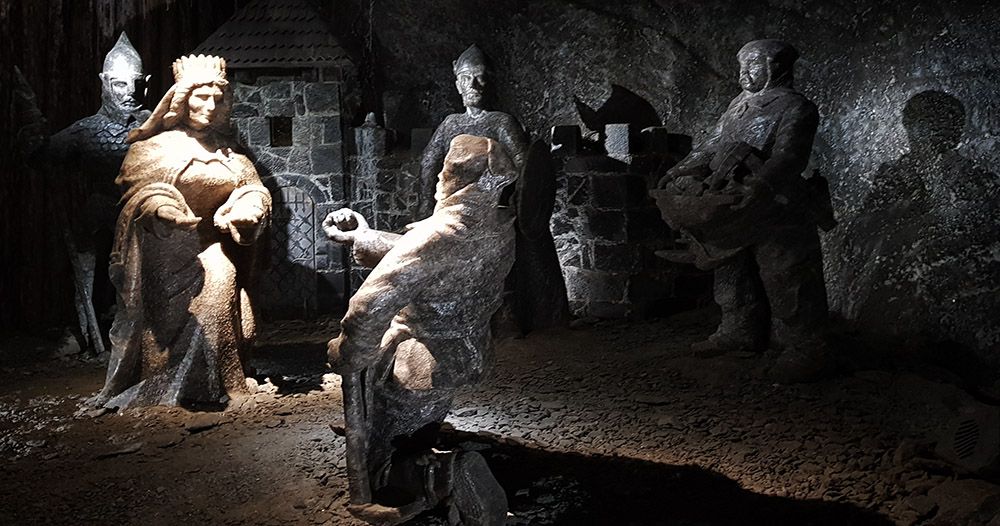
Practical matters
Best travel time for a city break to Kraków
Kraków used to have four distinct seasons, but due to climate change, the differences are less pronounced nowadays. The summers are not too hot but humid. The winters are sometimes very cold but nowadays a bit milder. We were there at the end of May/beginning of June and had very nice weather for a city trip. This period is the best travel time besides September and October.
Where to stay in Kraków
There are many hotels in all shapes and sizes throughout the city. Think of the usual, luxurious and expensive hotel chains, but also stylish, stately hotels and smaller boutique hotels. In addition, there is a wide range of apartments.
We stayed with friends in one of the apartments of P&J Apartments Florianska which had a remarkable layout. The apartment had two separate, large bedrooms but only one small bathroom with toilet. If you wanted to go from the furthest bedroom to the very spacious living room, you had to go through the other bedroom. We had quite a bit of noise from the nightlife crowd that walked through the streets until late at night. The breakfast was good by the way, although the breakfast room was a little small.
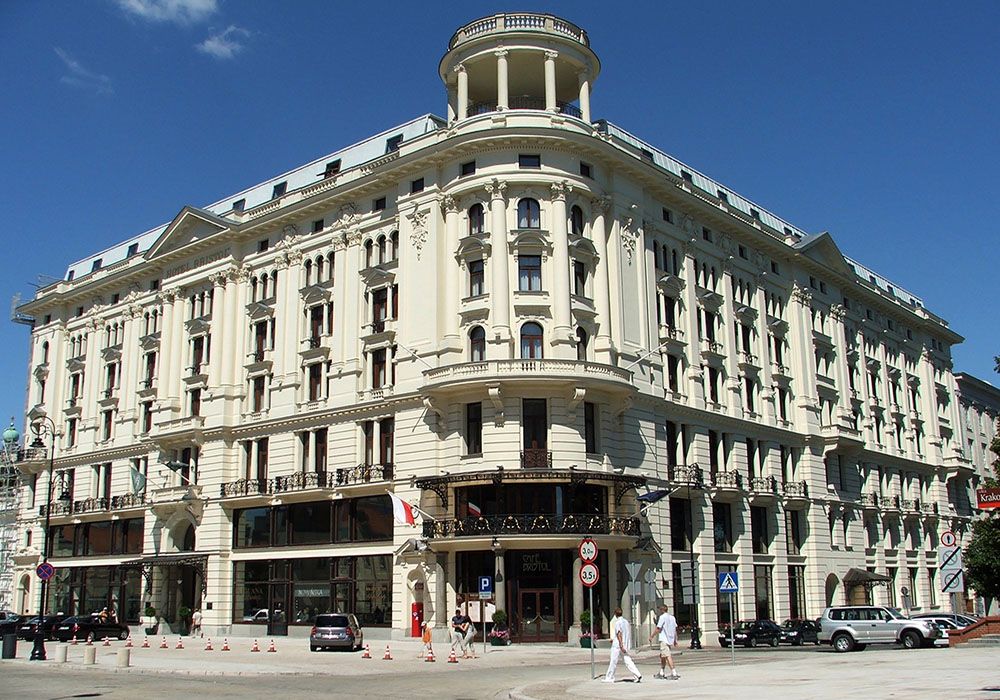
How to get to Kraków
It is better not to visit the old town by car. There are often traffic jams and few parking spaces. It is better to go by plane or train, or to park your car far outside the city centre and from there take the tram to the city centre.
The transportation to and from the airport is basically well arranged. A cheap and comfortable method is by train. For 9 PLN (when we were there that was worth about €2) you travel one way to or from the city in 20 minutes. On the way back, we had some confusion. There were no trains to the airport. Instead, for the same fare, the bus took a little longer to get there than the train. Take a good look at the signs and if you only see “bus” at certain times, leave the station building at the side of platform 5 to go to the bus station.
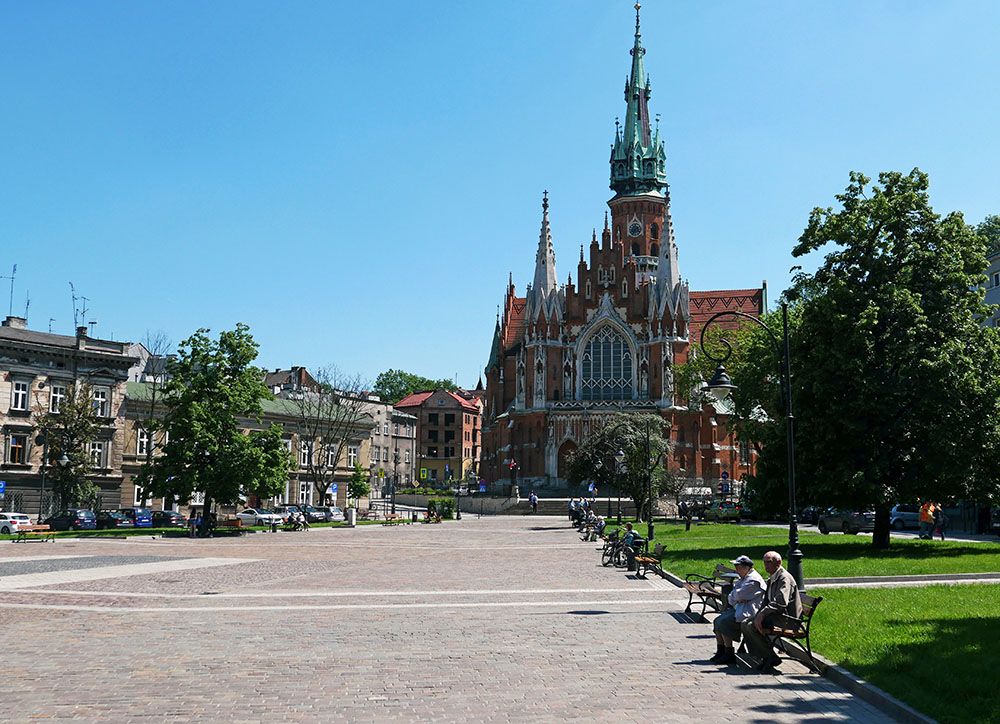
Getting around the city
We did everything on foot. Especially the old town, but also the Kazimierz and Podgórze districts are easy to reach on foot. There are a number of beautiful walking routes that take you past the main sights. The handy Time to Momo travel guide that we used contains some other routes.
Keep in mind that the footpaths in the winter sometimes are not cleared of snow so wear waterproof shoes if you go to Kraków in that period.
Public transport in Kraków is well organised. There are many trams and buses that can get you to the more distant districts. Click here for a map and the timetable. Another option is by bike. There are several places where you can rent bikes. However, there are not that many cycle paths so you have to share the footpaths with the many pedestrians.

